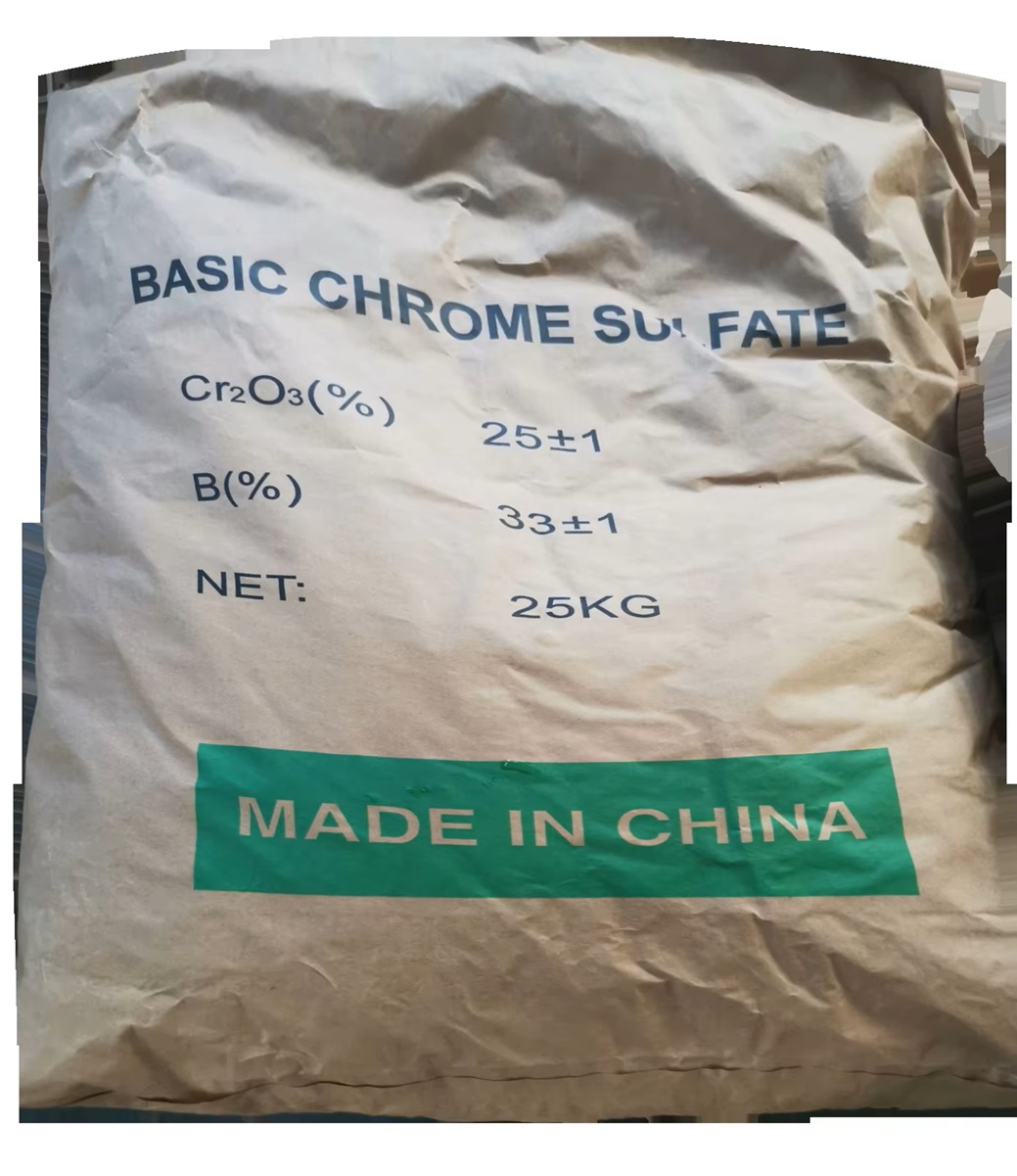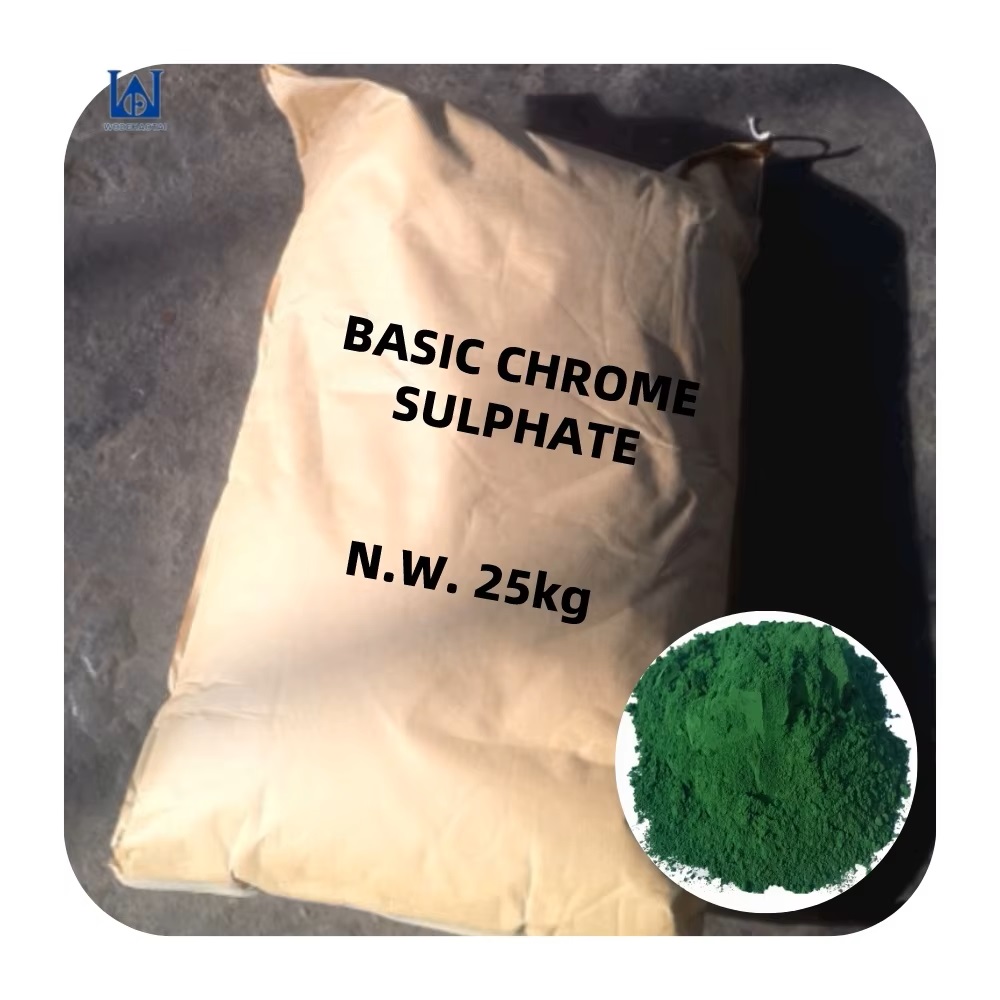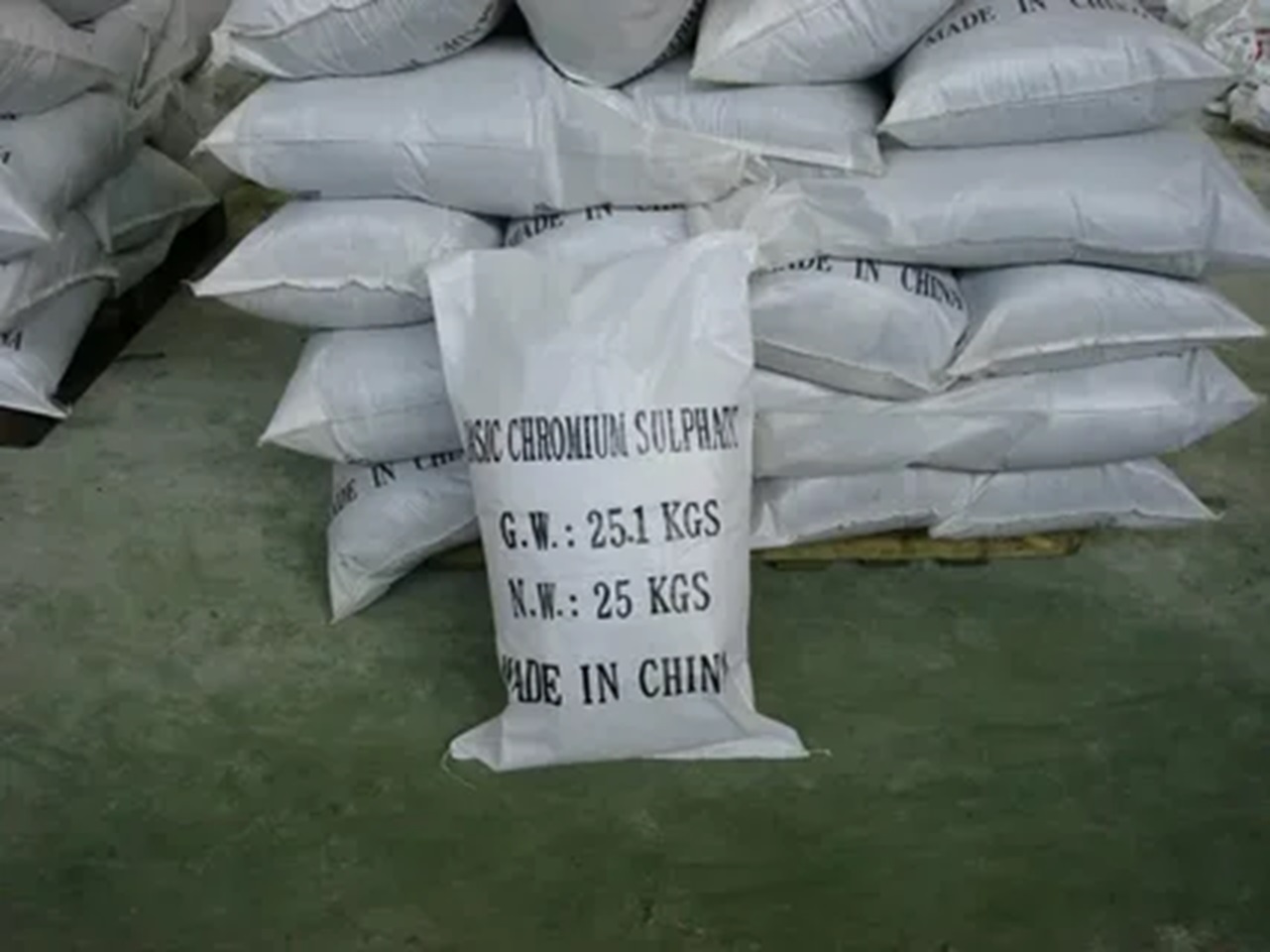We unleash your business potential by maximize the business innovation.
Send EmailBasic Chromic Sulfate, CHROMIUM SULFATE BASIC, Chromium Hydroxide Sulfate, Chromium (iii) Sulphate Basic, 39380-78-4
CAS: 39380-78-4
Molecular Formula: CrH3O12S3
Names and Identifiers
| Name | chromium (iii) sulphate basic |
| Synonyms | Chromosal B basic chromic sulfate basic chrome sulphate CHROMIUM SULFATE,BASIC Chromic sulfate (basic) chromic hydroxide sulfate Chromium hydroxide sulfate Chromium(Iii)SulphateBasic CHROMIUM(III) SULFATE BASIC chromium (iii) sulphate basic chromium(3+) hydroxide sulfate CHROMIUM (III) SULPHATE BASIC Extra Pure |
| CAS | 39380-78-4 |
| EINECS | 619-674-8 |
Physico-chemical Properties
| Molecular Formula | CrH3O12S3 |
| Molar Mass | 343.20772 |
| Density | 1.7 |
| Melting Point | 90°C |
| Water Solubility | Soluble in water |
| Appearance | Solid |
| Color | Green Crystalline |
| Odor | Odorless |
| Storage Condition | 2-8℃ |
| Physical and Chemical Properties | The product is a mixture of basic chromium sulfate and sodium sulfate, and the general formula is Cr(OH)m(SO4)n · 2xh2o. It is an amorphous dark green powder or flake, and the particles have a glassy state under a microscope. Soluble in water, insoluble in alcohol. Strong hygroscopicity. Toxic! |
| Use | For tanning and mordant dyeing |
Risk and Safety
| Hazard Symbols | C - Corrosive |
| Risk Codes | 34 - Causes burns |
| Safety Description | S26 - In case of contact with eyes, rinse immediately with plenty of water and seek medical advice. S36/37/39 - Wear suitable protective clothing, gloves and eye/face protection. S45 - In case of accident or if you feel unwell, seek medical advice immediately (show the label whenever possible.) |
| UN IDs | UN1759 8/PG 2 |
| RTECS | GB6240000 |
| Packing Group | II |
Upstream Downstream Industry
| Raw Materials | Sulfuric acid Dextrose Anhydrate Sodium Dichromate |
Nature
industrial products are mixtures of basic chromium sulfate and sodium sulfate, and the general formula is Cr (OH)m(S04) N. 2th20. It is an amorphous dark green powder or flake, and the particles have a glassy state under a microscope. Soluble in water, insoluble in alcohol. Strong hygroscopicity. Toxic!
Preparation Method
The production methods of basic chromium sulfate mainly include organic matter reduction method and sulfur dioxide reduction method.
Organic reduction method: After sodium dichromate mother liquor is acidified with sodium bisulfate solution or sulfuric acid in a lead-lined or glass-lined reactor with stirring, sucrose reducing agent is slowly added under stirring to reduce hexavalent chromium, at the end of the reaction, the boiling of the solution is maintained, which is beneficial to the completion of the reaction. The reaction product is a syrup-like viscous liquid. Water is added to adjust the concentration of the solution to 40-42086, and the solution is first naturally cooled, and then frozen in a cooling crystallizer to below 10 ℃ to make part of the sodium sulfate to form mirabilite crystals, after centrifugal separation, liquid basic chromium sulfate product was prepared, and then concentrated and dried to obtain solid basic chromium sulfate product.
Use
mainly used for tanning leather. Is the raw material for the production of chromium hydroxide. The dye industry is used for the production of reactive black dyes. The printing and dyeing industry is used as a mordant.
Safety
The solid product is packed in a polypropylene woven bag made of inner village polyethylene plastic bag with a net weight of 25kg and 50kg per bag. Liquid products are transported in a tank car. The package should be marked with "drug. It is an inorganic and dangerous drug. Code: 83028. Should be stored in a cool, ventilated, dry warehouse. Packaging containers should be sealed and moisture-proof. It shall not be stored and mixed with edible articles, organic matter, flammable materials and acids. Transport should be protected from rain and sun exposure. During loading and unloading, care should be taken to prevent package breakage. Fire can be used with water, sand, carbon dioxide fire extinguishing. Toxicity and protection: see sodium dichromate.
Nature
| EPA chemical information | Chromium hydroxide sulfate (Cr(OH)(SO4)) (12336-95-7) |
Uses and synthesis methods
production method
The production methods of basic chromium sulfate mainly include organic reduction method and sulfur dioxide reduction method. The organic matter reduction method uses sodium dichromate mother liquor with sodium bisulfate solution (40~42 ° Bé) or sulfuric acid in a lead-lined or glass-lined stirred reactor for stirring and acidification, and slowly adds sucrose reducing agent under stirring. The hexavalent chromium is reduced, and the solution is kept boiling at the end of the reaction, which is conducive to the complete reaction.
The reaction product is a syrup-like viscous liquid. Add water to adjust the concentration of the solution to 40~42 ° Bé. First, it is naturally cooled, and then frozen to below 10 ℃ in a cooling crystallizer to make part of the sodium sulfate form mirabilite crystals. After centrifugal separation, a liquid basic chromium sulfate product is prepared, and then concentrated and dried to obtain a solid basic chromium sulfate finished product.
category
toxic substances
toxicity classification
Poisoning
acute toxicity
oral-rat LD50 7760 mg/kg; Oral-mouse LD50:2900 mg/kg
stimulus data
eye-rabbit 50 mg severe
flammability hazard characteristics
Non-combustible; toxic chromium-containing and sulfur oxide fumes are produced on the fire site;
storage and transportation features
Warehouse low temperature, ventilated, dry
fire extinguishing agent
Water, carbon dioxide, dry powder, sand
Reference Information
| pH indicator color change ph range | 1.5 - 2.5 |
| use | basic chromium sulfate can be used in leather industry to tanning leather, dye industry to produce reactive black, etc. for tanning and mordant dyeing |


